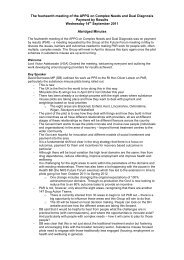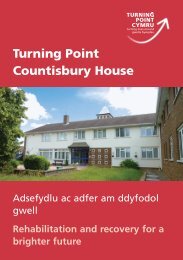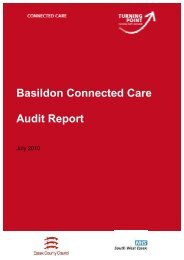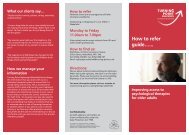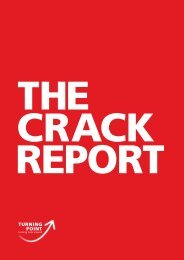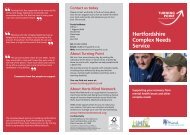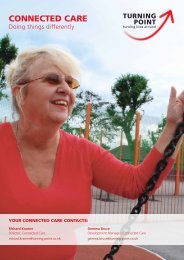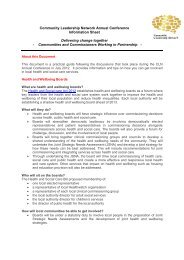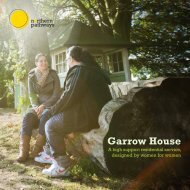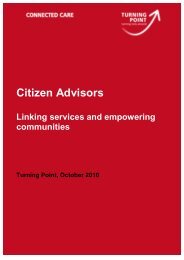Learning Disability Emerging Plan - Turning Point
Learning Disability Emerging Plan - Turning Point
Learning Disability Emerging Plan - Turning Point
Create successful ePaper yourself
Turn your PDF publications into a flip-book with our unique Google optimized e-Paper software.
<strong>Turning</strong> <strong>Point</strong> <strong>Learning</strong> <strong>Disability</strong> <strong>Emerging</strong> <strong>Plan</strong> 2013 - 20163. The response to Winterbourne ViewThe spotlight has very much been, and will continue to be on quality. In its final report on WinterbourneView, the Government sets out a programme of action to transform services so that people no longer liveinappropriately in hospitals. Instead, individuals should be cared for in line with best practice, based on theirindividual needs and in a way that ensures their wishes, and those of their families, are listened to and placed atthe heart of planning and delivering their care.The report makes clear that there are wide ranging actions required by many organisations that result fromWinterbourne (see Appendix 2 for a summary).TURNING POINT’S PERSPECTIVE:We will not engage in new independent forensic hospital based provision. We willhowever focus on offering the least restrictive practices to this group of people –step down from hospital provision to intensive supported living with wrap aroundsupport.4. Community based servicesAs part of the government’s commitment to community based provision, we are likely to see a reduction inresidential care and an increase in supported living contracts and innovative day opportunities.a. AccommodationOf the 138,995 adults with learning disabilities reported by local authorities to be in some form ofaccommodation in 2010/11:• n 29.6% (41,205 people) were reported to be living permanently with family or friends• n 81,985 adults (59% of the total number in some form of accommodation) were reported to be inpermanent accommodation in 2010/11This group were most likely to be living in:• n registered care homes (23,465 people; 16.9% of the total)• n supported accommodation/supported group homes (17,610 people; 12.7%), or• n some form of tenancy (17,405 people; 12.5%) xiThese numbers represent increases from 2009/10 - 2010/12 of adults in sheltered housing (5.5% increase),tenancies with a private landlord (8.1%) or temporary accommodation (76.6%).For the same period there was a decrease of:• n 5.5% in the number of adults in registered care homes• n 19.3% in acute/long stay healthcare• n 29.5% in the number of adults in registered nursing homes• n 15.1% in owner occupier/shared ownership housing10



